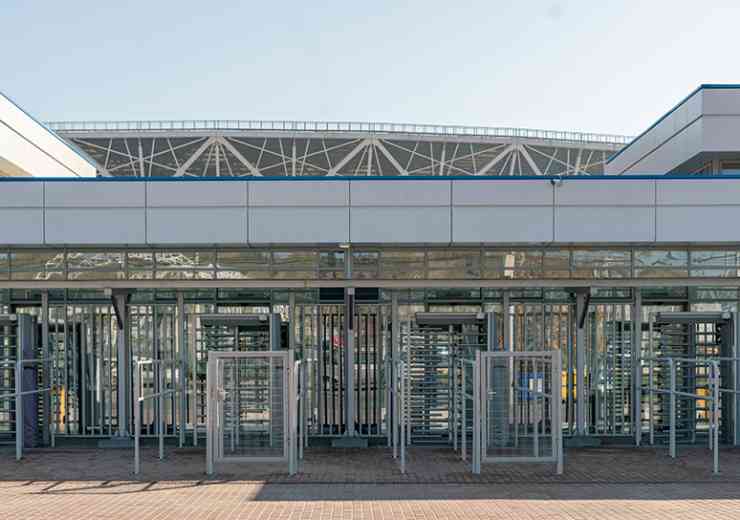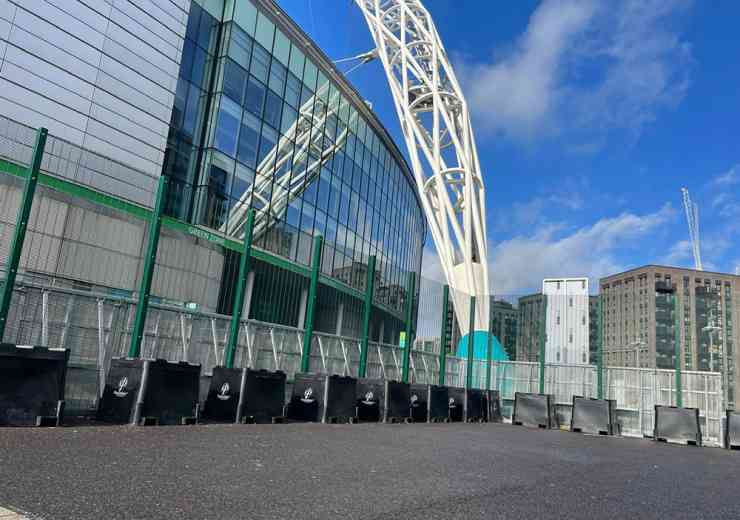The nuclear threat: Should the west be concerned?
 The dread inspired by nuclear weapons is special but not new. It dates back to the first nuclear explosions in 1945 and to the 1946 Congressional ban on nuclear transfers.
The dread inspired by nuclear weapons is special but not new. It dates back to the first nuclear explosions in 1945 and to the 1946 Congressional ban on nuclear transfers.
The Nuclear Threat has been dramatically reduced by the 1970 Nuclear Non-proliferation Treaty (NPT), by successive US/Russian nuclear arms reduction agreements, and by the creation of nuclear weapon-free zones (NWFZs) covering Latin America, Africa, and large parts of Asia and the Pacific. But it is still with us. It lies behind the prominence given to preventing nuclear proliferation in recent US and UK national security strategies.
Capacities
At a simple level, threats are a matter of capacity. Threatening nuclear capacities can range from the possession of nuclear weapons, through a latent ‘threshold’ or ‘breakout’ capability, to the ability to produce small quantities of nuclear material that might fall into the wrong hands.
The nuclear facilities that most concern threat analysts are plants that enrich uranium by feeding it in gaseous form through cascades of centrifuge machines, and the plants that subject spent (irradiated) uranium fuel to chemical processes to separate the plutonium created by nuclear reactions.
Enrichment plants and reprocessing plants produce the ‘fissile material’ (HEU and plutonium) from which nuclear explosives devices can be made. Reactors are only a potential threat insofar as reactor cores produce plutonium as a by-product – some more efficiently than others.
Intention
On a more sophisticated view, capacity is only one element in the threat equation: motive and intention, and political risk, are also important. Policy-makers in Washington do not lie awake worrying about Brazil’s ability to produce large quantities of HEU, because Brazil has no discernible motive for harnessing its enrichment capacity to the production of weapons pointed at the US; there is no evidence that Brazil’s leaders have any intention of going down that path, and the risk of those leaders being replaced by leaders who would have radically different attitudes is very low.
Sometimes the intentions and motives of other states are hard to read, and their domestic political outlook hard to predict. Intelligence agencies generally find it easier to gather information about attempts to acquire capacities than about why leaders want a particular capability or the use they intend to make of it. The agencies’ intelligence-gathering record when it comes to predicting revolution and regime change also leaves something to be desired.
Assuming the worst
So policymakers sometimes have to settle for a compromise between the simple and the sophisticated. When news reaches State A that the government of State B is seeking to acquire a capacity of concern, policy-makers in State A asked themselves whether government B is best seen as friendly or unfriendly. If unfriendly then A’s tendency is to assume the worst – that the capacity will be used to harm A’s interests – and to see that capacity as a threat. Assuming the worst is of course prudent. It is safer for governments to over-insure than to be taken by surprise or seen as ingenuous.
These abstractions are a necessary preamble to two important points. The gravity of a nuclear threat is a matter of judgement; and that judgement is crucially influenced by assessments of such intangibles as motives and intentions, friendliness and unfriendliness, and political risk.
These points allow us to narrow the field by leaving to one side first the large number of nuclear programmes that do not entail a capacity to enrich or reprocess, and then a smaller group of states that can enrich or reprocess but whose intentions and political prospects are of no concern; and finally Russia, China and India, three nuclear-armed states that are on friendly terms with the US and its allies.
North Korea
North Korea (the DPRK) presents the least questionable nuclear threat to the West. It not only possesses at least one enrichment plant and the capacity to reprocess spent fuel; it also possesses an estimated 60-70kg of plutonium (enough for 12-13 warheads) and missiles capable of carrying nuclear payloads to target zones in Japan and South Korea. It has demonstrated that it knows how to build nuclear devices, albeit crude ones in the view of experts who have studied the results of the DPRK’s two test explosions (2006 and 2009). And at intervals DPRK leaders take unfriendliness towards the US and its North Pacific allies into the realm of belligerence.
Still, if one starts looking into motives and intentions, the picture becomes a little less bleak. The minds of DPRK leaders are notoriously difficult to read, and their record at keeping secrets is good. They have shown, though, that they are rational actors who have quite a shrewd sense of what their Chinese patrons will and will not tolerate, and an instinct for survival. For such reasons the risk of North Korea being the first state since the US in 1945 to make offensive use of nuclear weapons is low. The near-certainty in North Korean minds that a nuclear attack on South Korea or Japan would provoke their own annihilation is an effective deterrent.
There are, however, other forms that the nuclear threat can take. There are risks that one state’s possession of nuclear weapons will induce other states to seek such weapons in self-defence, that the possessor of nuclear know-how and fissile material will transfer one or other, or both, to other states or to terrorist groups, and that measures in a possessor state to protect nuclear material will not prevent terrorists acquiring material through theft or armed assault.
In these respects the DPRK picture is mixed. First, the risk of Japan and South Korea seeking nuclear weapons is very low. Japan, as the sole victim of a nuclear attack, is a fervent champion of nuclear non-proliferation. Both Japan and South Korea know they can count on the deterrent forces of the US. Both prefer to work for the ‘denuclearisation’ of the Korean Peninsula.
Second, security is so tight in North Korea that there is little risk of theft from DPRK nuclear facilities. But third, North Korea is thought to have helped Syria to build a reactor that was bombed in 2007 (see below) and is suspected of nuclear cooperation with Myanmar. And fourth, although the DPRK is not known to have helped terrorists to acquire nuclear material, it would be unwise to exclude a DPRK decision to sell terrorists material, if leaders thought a transaction might remain undetected.
Pakistan
Pakistan can produce large quantities of HEU and is thought to possess upwards of 70 nuclear devices, as well as delivery vehicles. This nuclear arsenal is not perceived as a direct threat to the West because Pakistani leaders portray it as a counter-force to India’s nuclear weaponry. Furthermore, Pakistani delivery vehicles could not reach Western targets and Pakistan is a longstanding friend of the West. But a nuclear exchange between India and Pakistan might harm western interests. Western leaders recognise this – in 2002 they pulled strings to avert a possibly imminent exchange.
The West’s main fear, however, is the future – political risk looms large in the Pakistani case. Rapid population growth, economic weaknesses, corrupt politics, ethnic separatism and Islamic fundamentalism make for an unpredictable outlook. Although Pakistan’s stocks of fissile material and nuclear devices are guarded by elite elements of Pakistan’s strongest institution, the army, confidence in their long-term physical security is not high.
Proliferation is a further concern. Pakistan is home to Dr A.Q. Khan, whose illicit network supplied nuclear know-how and equipment to Iran, the DPRK and Libya. Khan was placed under house arrest in 2004, however, the extent to which this was done for the sake of appearances remains opaque. It would be unwise to assume that Pakistani leaders are, or always will be, determined to prevent Khan from ever going back into business.
Iran
Iran possesses a capacity to produce small quantities of HEU, enough perhaps for two weapons a year; but there is no evidence that it has done so. It is working to improve this capacity, notably by developing more efficient centrifuge machines; progress, however, has been slow. Very little is known about suspected warhead design work.
The motives and intentions of Iran’s leaders have been and remain obscure. They can be thought unlikely to create a nuclear force for offensive purposes, as they have proved themselves to be rational actors, capable of grasping the implications of US and Israeli nuclear deterrent capabilities. Instead, there are grounds to think that they seek a threshold or break-out capability, to deter any future attack on Iran by a non-nuclear-armed state. In February 2011 the US director of national intelligence testified that the US intelligence community assesses Iran to be keeping open the option of developing weapons, but does not know if Iran will eventually decide to build such weapons.
Until that decision is taken it is hard to see Iran’s nuclear programme as a threat to the security of other states. It is better seen as a threat to the political interests of two of Iran’s regional rivals: Saudi Arabia and Israel. Both of these states – unlike Turkey, another SW Asian rival – fear that a latent nuclear weapon capability will enhance Iranian prestige, self-confidence, and regional influence, to their cost.
Iran’s programme also gives rise to proliferation fears. Yet there is no evidence that Iran has transferred nuclear know-how or material to other states or non-state actors, despite its longstanding ties to Hezbollah and Hamas. There are good reasons to believe it will not do so. Saudi rivalry with Iran could tempt Saudi leaders to seek a matching enrichment capability, but that would be unwelcome to the US; it would presuppose human resource capabilities that Saudi Arabia is a long way from possessing; and coming to a confidence-building understanding with Iran about the intentions behind its nuclear programme would be a wiser policy.
There is also a risk that Iran’s programme may provoke a pre-emptive strike by Israel or the US on Iranian enrichment facilities. This could have severe consequences for Western interests, and would bring only short-term relief to those who see the programme as a threat. This unattractive cost/benefit prospect appears to be understood by the Obama administration, and is probably understood in Tel Aviv, despite rhetoric suggesting the contrary.
Syria and Myanmar
In September 2007 Israeli aircraft destroyed buildings under construction in a Syrian desert. Intelligence leaks have since suggested that this operation obliterated a nascent nuclear reactor that would have been capable of irradiating uranium from which plutonium could have been extracted. Syria’s failure to declare the site to the IAEA prior to the start of construction suggests that, if this was indeed a nuclear site, Syria intended it to be covert. In that case, this can be accounted a nuclear threat that was countered at an early stage.
The episode will have sufficed to earn Syria a place on a list of countries of concern (nuclear). Also on that list is Myanmar. Since Myanmar, like Syria and Iran, is a party to the NPT, and is also a party to the South-East Asian NWFZ, since its nuclear capacities are rudimentary;, and since its nuclear intentions are obscure, it would seem premature to regard it as a nuclear threat. Concern, though, can be justified by the unfriendly nature of the Burmese military regime’s relations with the West.
It is hard to argue that the NPT has been ineffective. It has helped to reduce to low single figures the number of state nuclear programmes that pose any kind of threat to the West. Respecting NPT commitments has come to make sense to all but rogue regimes. Nonetheless, complacency would be dangerous. Support for the NPT needs to be maintained by the West showing even-handed respect for all the treaty’s provisions and scrupulous attention to detail in the analysis of potential challenges to the regime.
About the author
Peter Jenkins is former British Ambassador to the International Atomic Energy Agency. He is now a partner at ADRg Ambassadors, a partnership of former British Ambassadors offering businesses, governments and international organisations operational insight and experience, high-level contacts, and influence and diplomatic negotiating skills.
For more information
www.adrgambassadors.com
digital issue




















